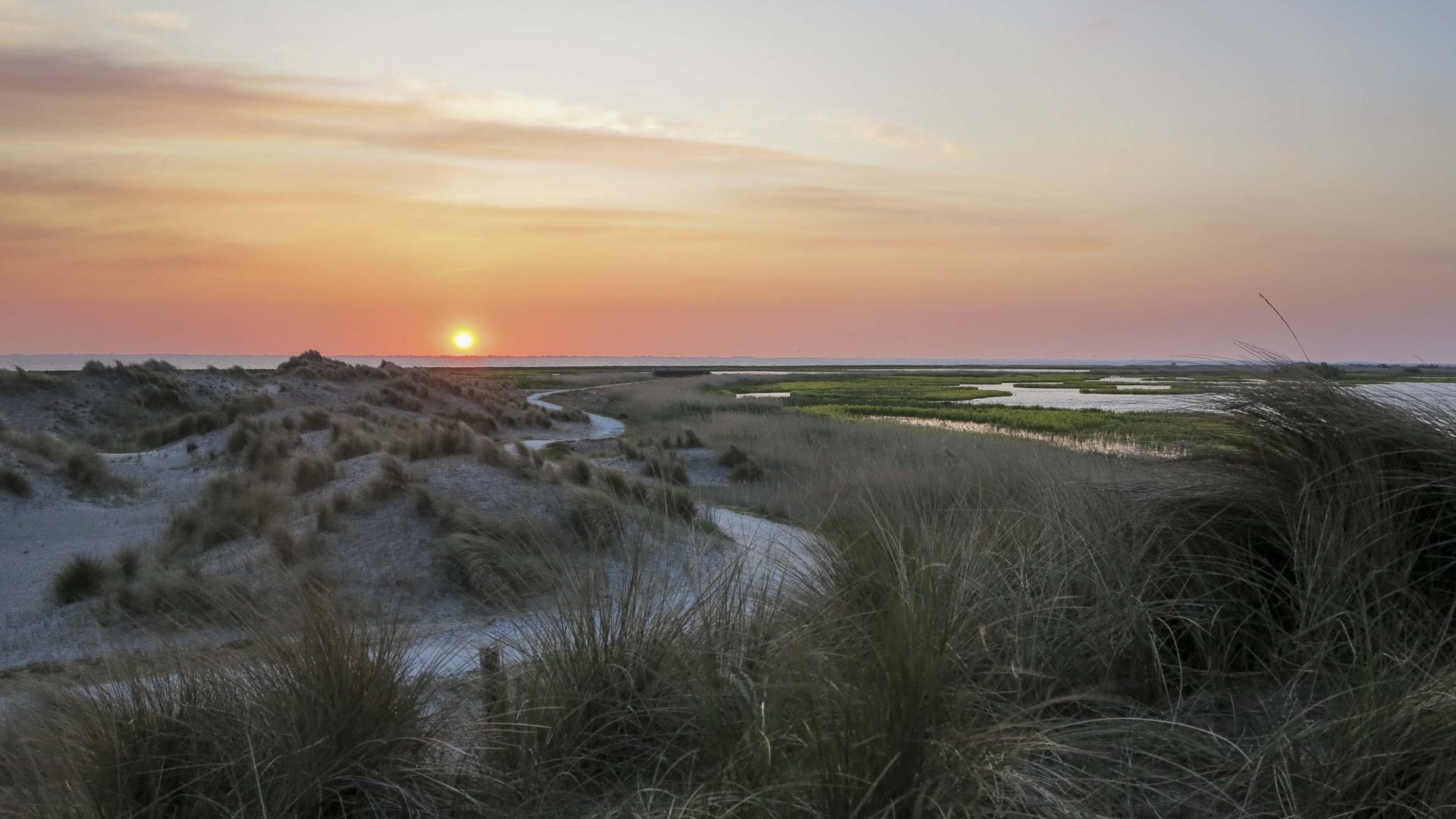
I am meandering around curving wetlands sprawled across a septet of islands. The wind blows hard, but a babel of birds dominates the soundscape: Screaming gulls, whistling plovers and deep-bass-thumping bitterns. A tern hovers over the water like an arabesque dancer before diving to snap up a small fish. Reedlings—tiny, egg-shaped birds—cling to the stalks of swaying marsh reeds. Blue-gray water ripples with avocets, long-tailed ducks, and even a couple of flamingos.
The islands thrum with life. It’s hard to believe that none of this was here seven years ago. There were no birds. No wetlands. No islands. Instead, there was only the open water of the Markermeer, a human-made lake in the center of the Netherlands, just west of Amsterdam.
But in 2016, dredgers started scooping mud and sand from the bottom of the lake to construct an entirely artificial 1,300-hectare archipelago. It was named the Marker Wadden.
The aim of the islands was to create a kind of paradise for nature and nature lovers alike. It was also meant to mitigate some of the ecological damage previously caused by the building of dikes that cut off the Markermeer from the North Sea, turning what was once an inland sea into a silty, nutrient-poor freshwater lake. Experts speculated that the islands would help clarify the water by trapping sediment on its shorelines, although this has yet to be proven.
Marker Wadden quickly attracted a notable amount of biodiversity—a feat that surprised many. They’ve also become a unique sailing destination on the Markermeer, giving visitors a sense of traveling to a strange, quasi-real place far removed from the minutiae of everyday life, only about an hour from the mainland […]
Read more on Adventure.com.